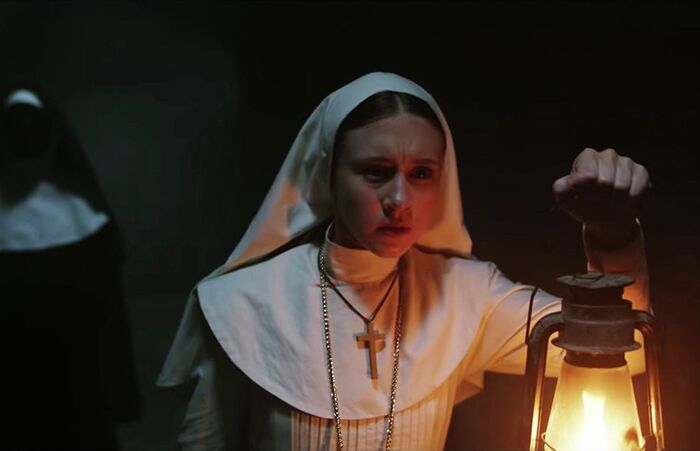Halloween: Clever revamp fails to deliver the thrills
Sam Osborne asks whether the ‘revival of franchises’ trick manages to deliver a treat

Cinema-goers may well have noticed a recent trend for the revival of decades-old franchises and much-loved classics. As this generation’s A Star is Born continues to garner early Oscar hype, there have also been recent additions to the Predator and Blade Runner universes, received to varied acclaim. It was with a mixture of excitement and trepidation then, that I ventured to see Halloween, the highly-anticipated sequel to the 1978 classic slasher of the same name.
Forty years on from the events of John Carpenter’s original, we return to the town of Hattenfield, Illinois where the psychotic serial killer Michael Myers previously slaughtered a large proportion of the adolescent population. Myers has since been incarcerated in a high-security psychiatric unit but as the 31st October fast approaches, he promptly escapes, returning to his old stomping ground and to Laurie Strode (Jamie Lee Curtis), who evaded him previously and in a multitude of sequels which this film ceremoniously retcons.
"Why do we need another Halloween film in 2018, you might ask? To the credit of Director David Gordon Green and his co-writers, I found myself speedily convinced on this point."
Now a grandmother, Laurie remains understandably traumatised by her past. Her relationship with her family has been fractured by her attempts to train and condition her daughter so that she will one day be ready to face the evil her mother has known. Laurie has spent years awaiting Michael’s return, living in high-security seclusion and maintaining a well-stocked arsenal, thus setting the scene for a renewed showdown with her masked nemesis.
Why do we need another Halloween film in 2018, you might ask? To the credit of Director David Gordon Green and his co-writers, I found myself speedily convinced on this point. This is in no small part down to the way in which the film inverts many of the tropes of its revered predecessor. In particular, the continual switching of gender roles allows for an intelligent take on the slasher genre in which female characters take control and are not reduced merely to the role of victims.

Gone also are the shots which stalked Myers’ victims from the killer’s visual perspective. Instead, emphasis is placed on the changing relationship between the hunter and the hunted, with one particularly satisfying moment reversing an iconic scene to give Myers a taste of his own ghoulish medicine.
The exploration of trauma as experienced by Laurie, and its effects on those around her, further adds to the film’s contemporary credentials and at first, suggest to the viewer that they are in for a truly refreshing and original surprise. Yet it is exactly this early promise that acts to heighten the sense of frustration as the film’s shortcomings become increasingly apparent.
"Suspense is never allowed to build adequately before the reveals which become so frequent and predictable that the viewer grows increasingly inured."
There is inadequate time allowed to explore Laurie’s character and those of her family. Instead, we are subjected to tedious side-plots, one concerning two British journalists making a podcast about Myers and the other following his Psychiatrist, Dr Sartain who harbours a maniacal desire to witness his patient “in the wild”. These narratives may exist to maintain the original film’s exploration of the at times voyeuristic obsession people nurture in relation to evil, but they are crudely uneven and in the case of the not-so-good doctor, descend into absurdity. All this prolongs our reaching the final face-off which pits three generations of Strode women against the man who has in some way been all their tormentors. This is brilliantly realised but it comes all too late and ends far too quickly.
Crucially, this Halloween simply isn’t very scary. Whereas Myers once indulged in prolonging the hunt of his victims, the 2018 incarnation is characterised by brutal efficiency. This may be to some extent necessitated by the more nuanced victim/assailant dynamic but horror fans may well feel cheated by the relative lack of false scares that could easily have built a greater level of suspense. Further detracting from this is the skewed horror to comedy ratio. Though at times genuinely funny, the jokes all too often distract from any mounting sense of dread, whilst allusions to the original film though intended as affectionate, occasionally come off as conceited. All this renders the film devoid of tension. Suspense is never allowed to build adequately before the reveals which become so frequent and predictable that the viewer grows increasingly inured.
The Halloween of 2018 refreshingly challenges the model so exhausted by countless slasher movies. It’s a fun, at times engaging picture which can be enjoyed by audiences regardless of their familiarity with the original. Yet it is the sense that this film comes so close to being so much more which ultimately renders it a disappointment. A more character-led approach may have allowed a deeper exploration of the film’s more nuanced concerns and for more time in building suspense and inspiring genuine terror. We are promised further sequels that might further build on the initial promise of this instalment, should it perform at the box office, but for now, it represents an opportunity sadly missed.
 Comment / Cambridge’s tourism risks commodifying students18 April 2025
Comment / Cambridge’s tourism risks commodifying students18 April 2025 News / Varsity ChatGPT survey17 April 2025
News / Varsity ChatGPT survey17 April 2025 News / Cambridge researchers build tool to predict cancer treatment success19 April 2025
News / Cambridge researchers build tool to predict cancer treatment success19 April 2025 News / Cambridge researchers find ‘strongest evidence yet’ of life on distant exoplanet18 April 2025
News / Cambridge researchers find ‘strongest evidence yet’ of life on distant exoplanet18 April 2025 News / Greenwich House occupiers miss deadline to respond to University legal action15 April 2025
News / Greenwich House occupiers miss deadline to respond to University legal action15 April 2025






